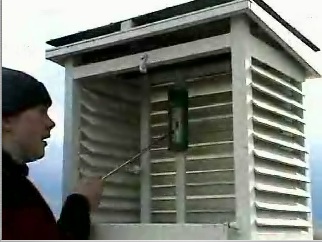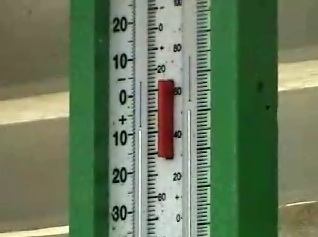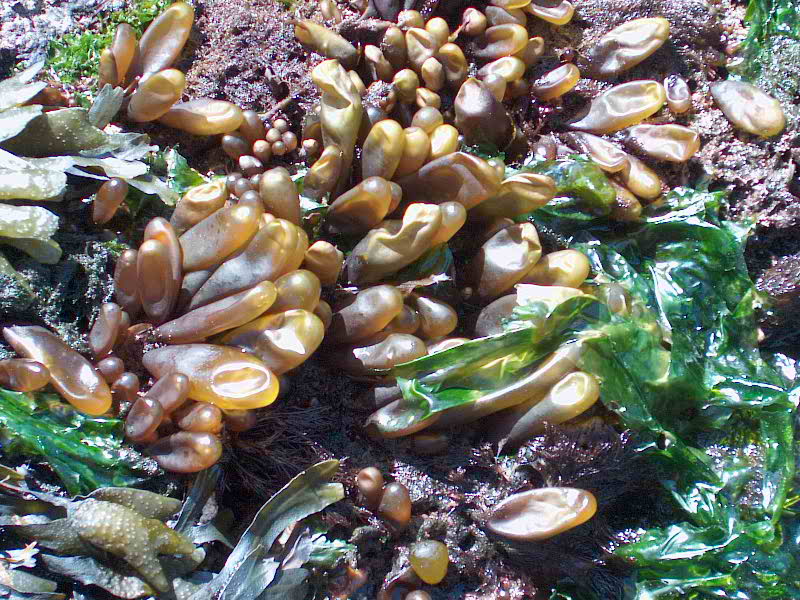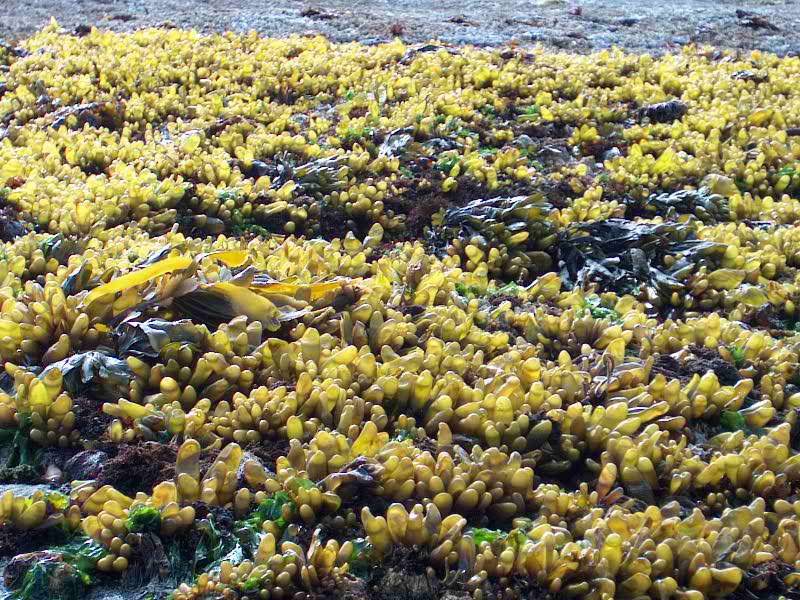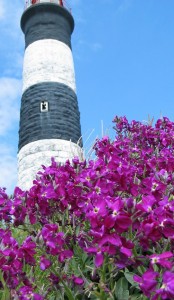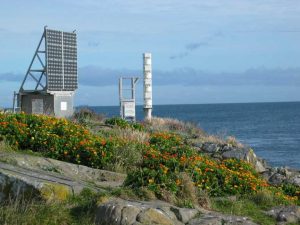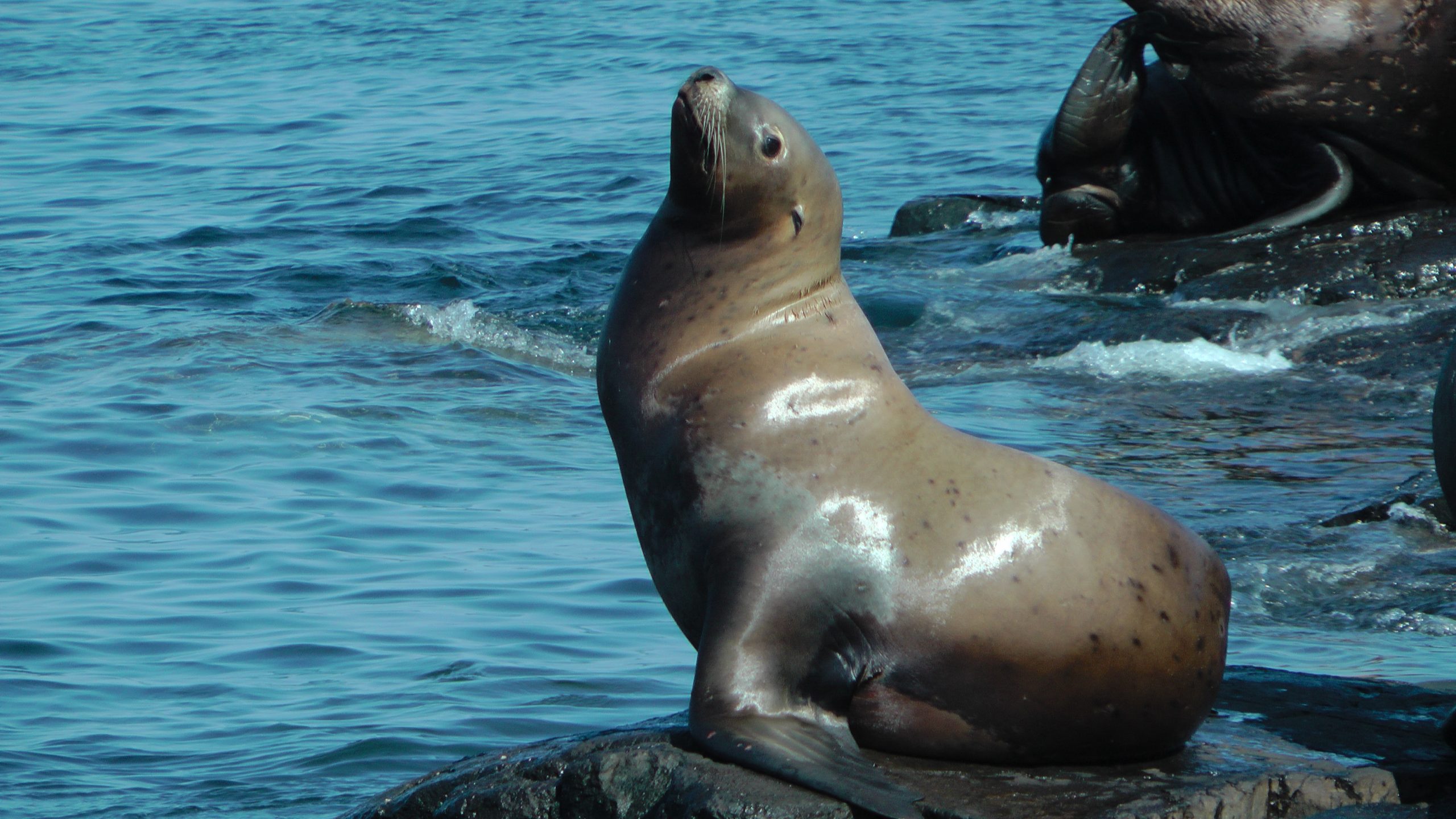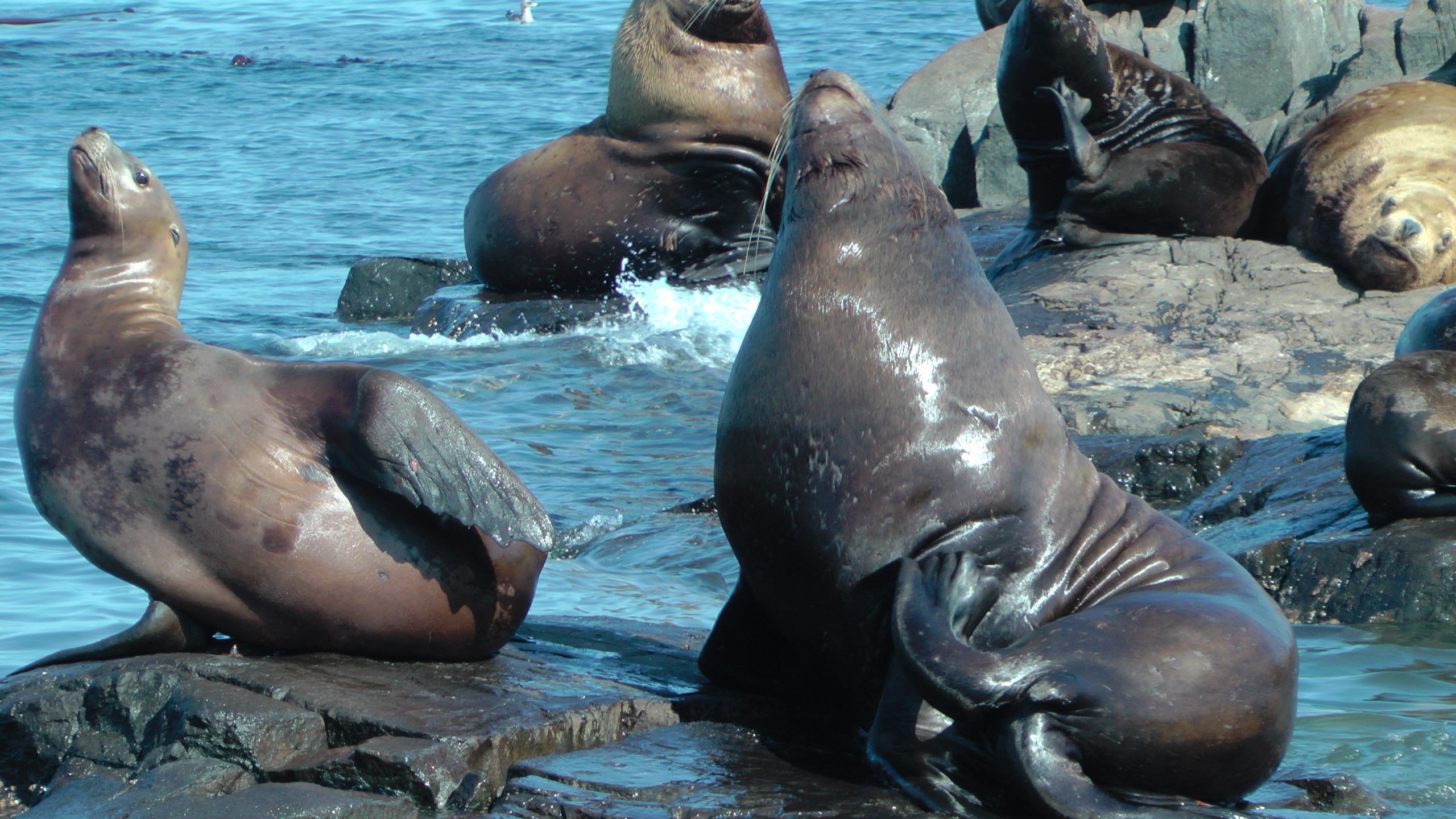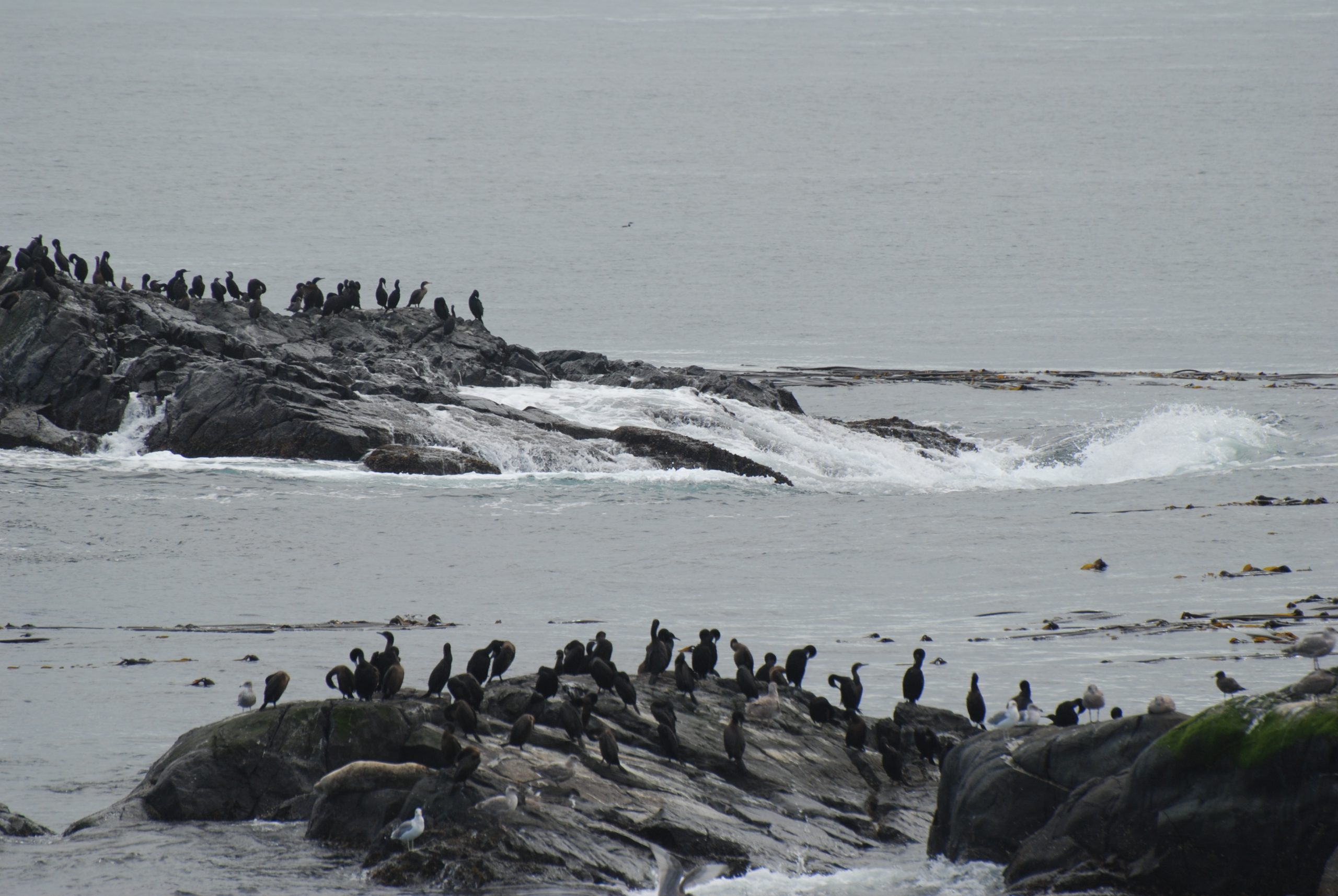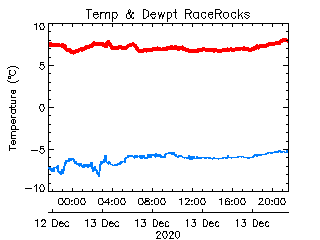 Air temperature and Dew Point today at Race Rocks
Air temperature and Dew Point today at Race Rocks
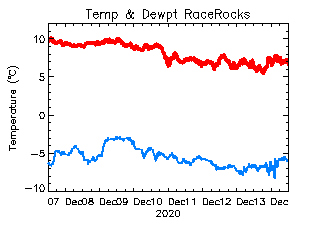 Air temperature and Dew Point this week at Race Rocks
Air temperature and Dew Point this week at Race Rocks
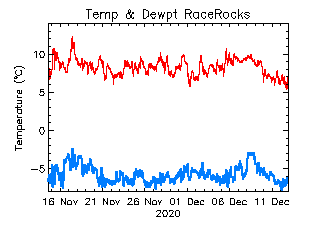 Air temperature and Dew Point this month at Race Rocks
Air temperature and Dew Point this month at Race Rocks
Air Temperature as an Abiotic Factor at Race Rocks
Extreme Temperature Values at Race Rocks Ecological Reserve Since 2006-04-21
The graph below shows the temperature data for today at Race Rocks. Temperature is a major factor affecting the distribution of terrestrial and intertidal organisms at Race Rocks. In the winter, the air temperature rarely falls below 0 degrees Celsius because of the surrounding moderating effect of the ocean, which does not go below 7degrees C in winter, or above 13.5 degrees C in the summer. In the summer, only those organisms which can tolerate or regulate the heat can survive, as July and August are often warm and dry. (see yearly means, highs and lows in the graphs below.)
| We have provided the data from our Davis weather station output to the UVic School Based Weather Station Network. The graphs above have been derived from their analysis. |
| TEMPERATURE ARCHIVES:
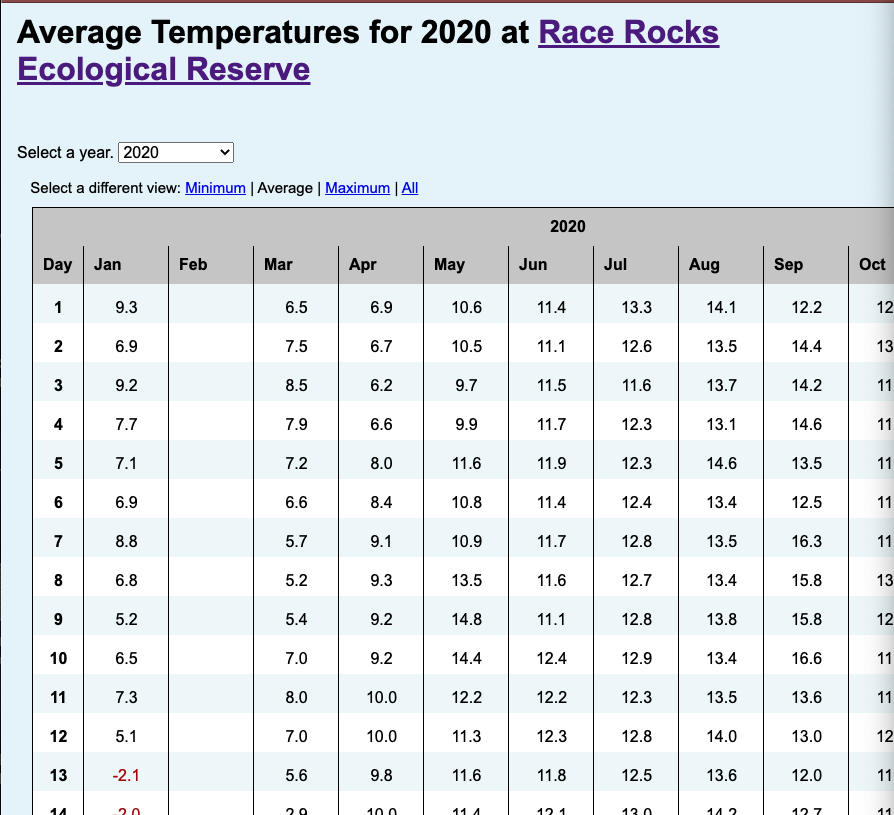 Yearly temperature averages for 2020 from the UVic site Yearly temperature averages for 2020 from the UVic site
|
This graphical display from the www.victoriaweather.ca site of all years shows common and deviant patterns of temperature.
|
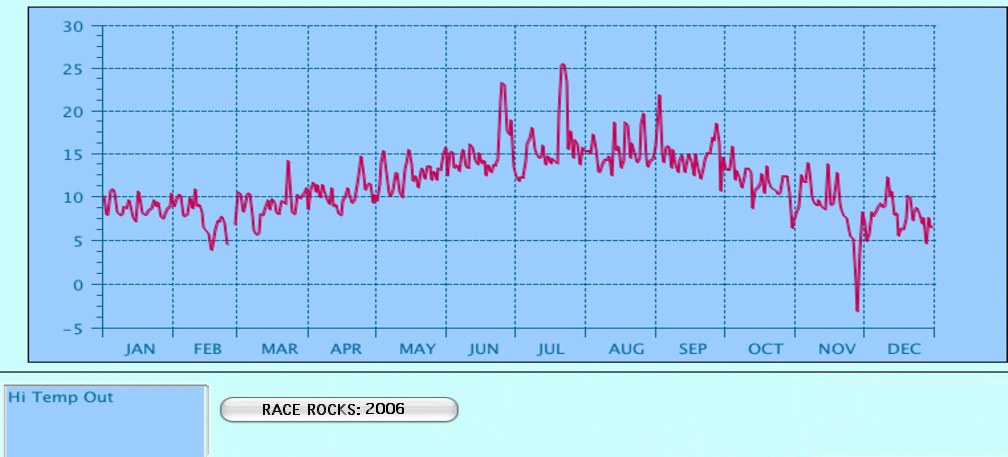 |
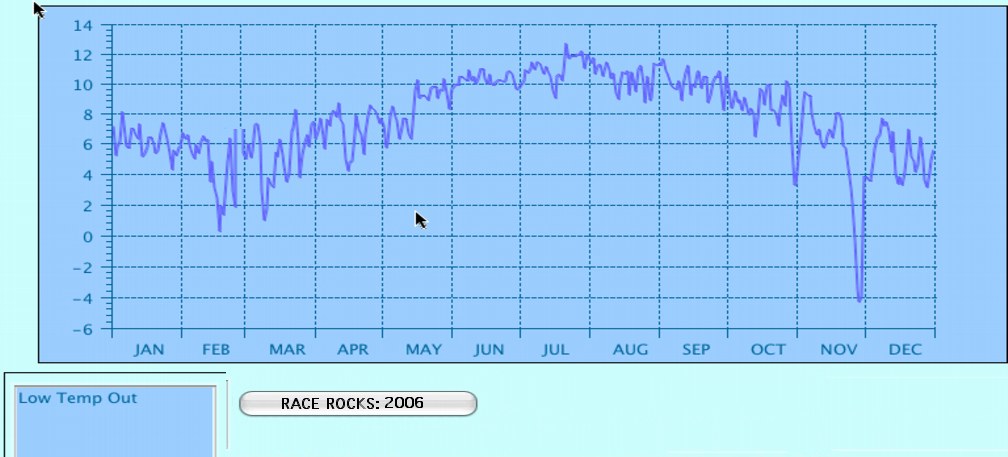 |
| Click here for the high temp outside for 2006 |
Click here for the low temp outside for 2006 |
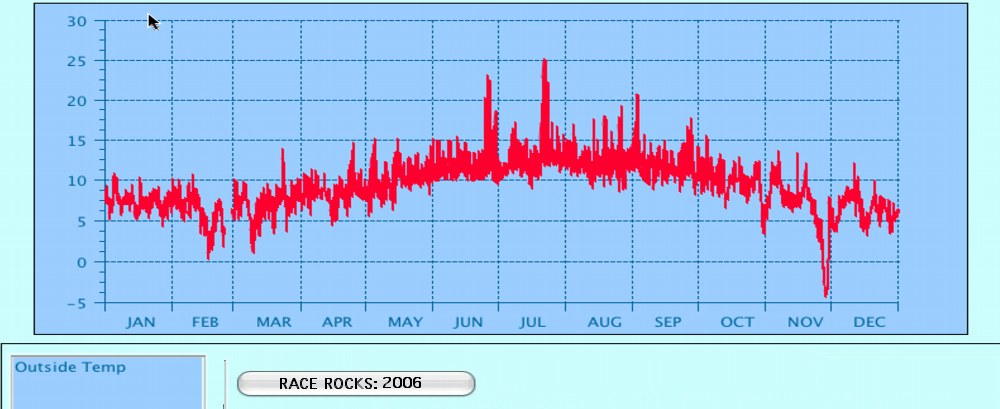
 |
| This graph is of November 2005- November 2006 Air Temperature at Race Rocks.The Davis Weather Station was started in November of 2005, so the records above are from that instrument. |
| Previous to January 2006, the Maximum, minimum and mean temperatures were determined manually every day at 1800 hrs. by the Light keeper in the early years and the Race Rocks Guardian after 1997. |
| The WIND CHILL at RACE ROCKS: The software calculates wind chill based on the temperature and wind speed readings for the archive period (that is, the temperature at the end of the archive interval and the average wind speed during the interval). WeatherLink uses the Osczevski (1995) equation to calculate wind chill. This is the method adopted by the US National Weather Service in September of 2001. |
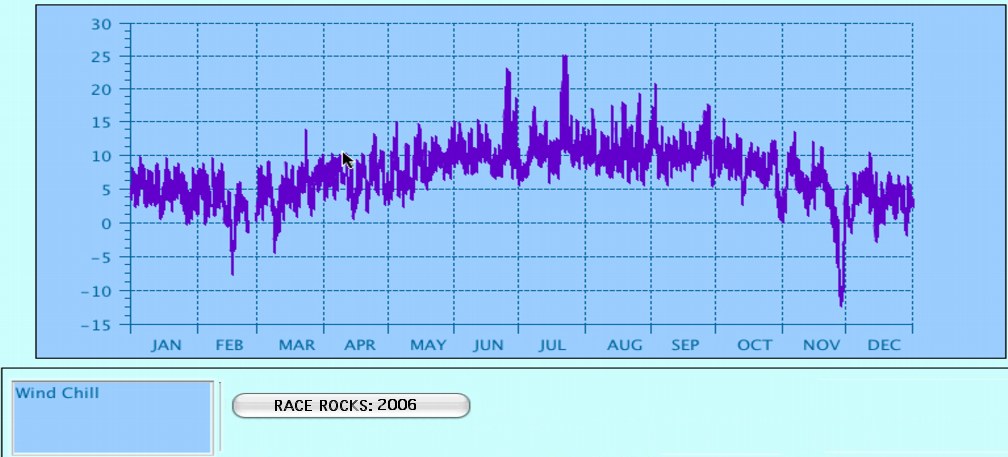
| Click on above for WIND CHILL for 2006 |
| The HEAT INDEX at RACE ROCKS |
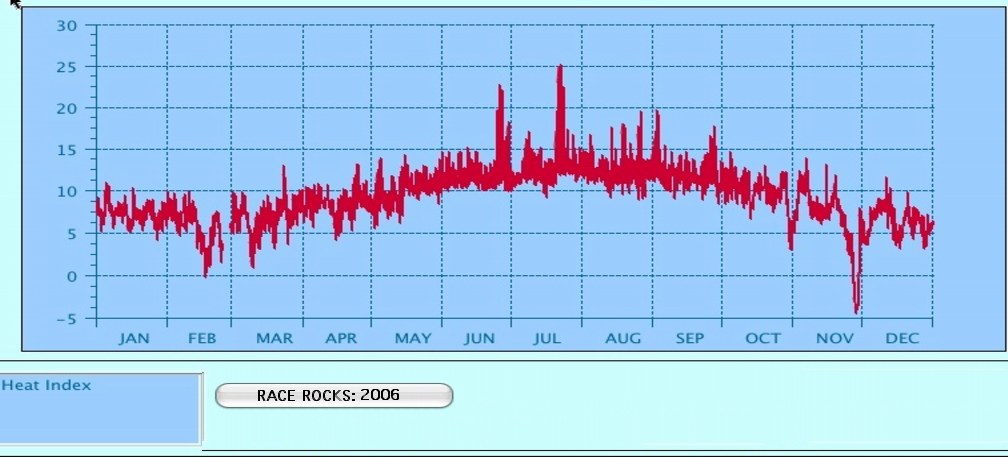 |
| The Heat Index calculated for this current week at Race Rocks. The Heat Index, also known as the Temperature/humidity index (THI) uses the temperature and the relative humidity to determine how hot the air actually “feels.” When humidity is high (i.e. the air is saturated with water vapor) the apparent temperature will be higher than the air temperature because perspiration cannot readily evaporate into the surrounding air. Technically, Heat Index is calculable only when air temperature is above 68 °F (20 °C) because it is a measure of heat stress, which is not significant at lower temperatures. Davis Instruments smooths the curve relating air temperature to Heat Index between 68 ºF (20 ºC) and 57 ºF (13.9 ºC). Below 57 ºF (13.9 ºC), the Heat Index is equal to outside temperature. Conversely, 135 °F (52 °C) is the highest Heat index for which calculation factors are available. Note that at very low humidity values, the air temperature can be as high as 140 ºF. In terms of storage to the data logger and database, Heat Index is a special case. It is not stored in archive memory or in the database, rather it is calculated as necessary (for example, when plotting or displaying database information). When Heat Index data is needed, the software calculates an average for each archive interval based on the temperature and humidity readings for the archive period. |
| The DEW POINT at RACE ROCKS: The Dew Point: Dew points indicate the amount moisture in the air. The higher the dew points, the higher the moisture content of the air at a given temperature.Weather conditions at locations with high dew point temperatures (65 or greater) are likely to be uncomfortably humid |
|
|
| Dew point temperature is defined as the temperature to which the air would have to cool (at constant pressure and constant water vapor content) in order to reach saturation. A state of saturation exists when the air is holding the maximum amount of water vapor possible at the existing temperature and pressure. |
The present dew point at Race Rocks, measured at 1.5 metres above the rock surface . See the Humidity Data page when the dew point temperature and air temperature are equal, the air is said to be saturated. Dew point temperature is NEVER GREATER than the air temperature. Therefore, if the air cools, moisture must be removed from the air and this is accomplished through condensation. This process results in the formation of tiny water droplets that can lead to the development of fog, frost, clouds, or even precipitation. Relative Humidity can be inferred from dew point values. When air temperature and dew point temperatures are very close, the air has a high relative humidity. The opposite is true when there is a large difference between air and dew point temperatures, which indicates air with lower relative humidity. Locations with high relative humidities indicate that the air is nearly saturated with moisture; clouds and precipitation are therefore quite possible. |
. |
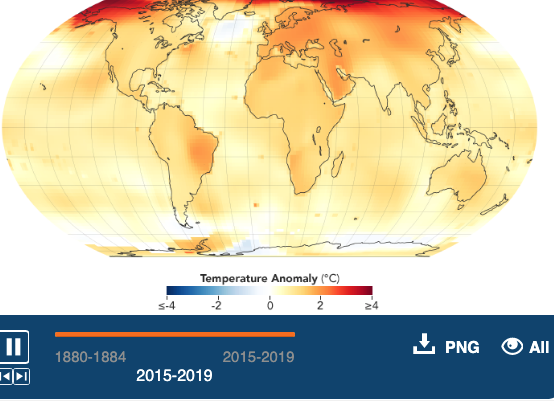 For Air Temperatures on a Global Scale, animation For Air Temperatures on a Global Scale, animation
| The ABIOTIC EFFECTS of TEMPERATURE on Organisms at Race Rocks |
Video:
The effects of air temperature on the distribution of organisms at Race Rocks.
In this video we discuss the effects on diatom growth from the increasing temperature which results from the increasing levels of solar energy in the early spring of 2006 in the upper intertidal zone on Great Race Rocks.
1. Marine Mammal Adaptation: 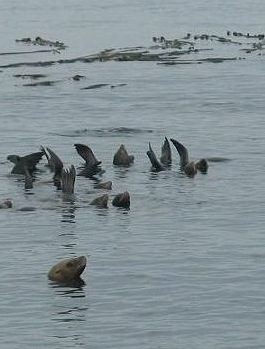 In the pictures from the California Sea lion page, the behaviour of rafting of sea lions is evident just off the jetty at Race Rocks. Since the pectoral flippers are filled with blood vessels and are very thin, thus having a high surface area to volume ratio, exposure to the atmosphere can assist in thermoregulation. In the pictures from the California Sea lion page, the behaviour of rafting of sea lions is evident just off the jetty at Race Rocks. Since the pectoral flippers are filled with blood vessels and are very thin, thus having a high surface area to volume ratio, exposure to the atmosphere can assist in thermoregulation. |
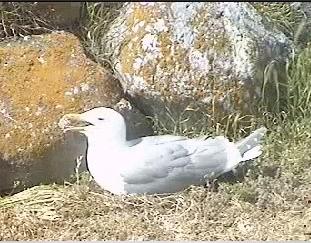 |
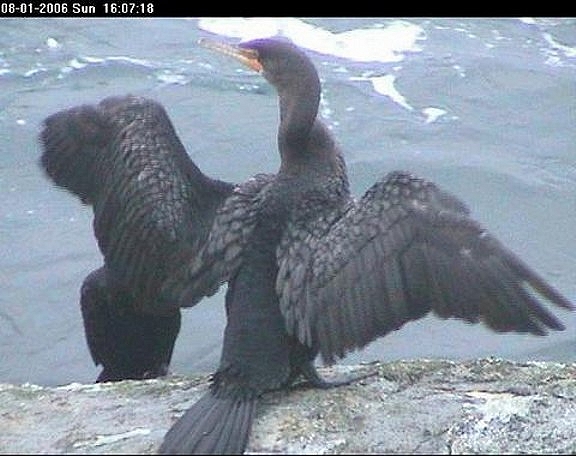 |
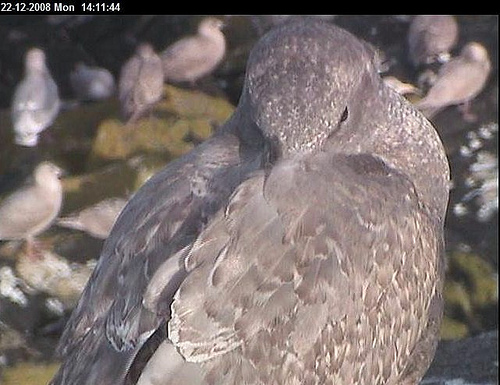 |
| A nesting Glaucous-winged Gull as seen by camera 1 on a hot day in July. |
Double-Crested Cormorants are frequently seen drying their wings, temperature regulation is possible as well. |
When a bird tucks its beak under its feathers, it conserves body heat by breathing warm air from the insulation of the feathers. PB photo Dec.2008 |
2. Bird Temperature Regulation Behaviour : Sea gulls nest at Race Rocks during the hottest part of summer. While incubating the eggs, they can often be seen panting as in this photo. Cormorants will often extend their wings to get more surface area for heat exchange or for drying plumage.
| 3.Macroalgal Adaptation to temperature: These Halosaccion are macroalgae living in the intertidal zone and they also have effective thermoregulation mechanisms. The tubular sacs are filled with water and there are tiny holes surrounded by regulating cells in the end of the sac. At low tide these sacs slowly leak water. Evaporation lowers the temperature of the algae’s surface thus providing an efficient cooling mechanism. |
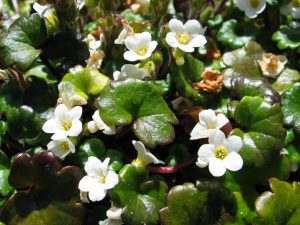 |
Romanzoffia tracyi or mist maidens as they appear between March and May. Throughout the winter their fleshy leathery leaves remain green. |
| 4. Terrestrial Plant Adaptations: There are very few areas in Canada, and certainly, only on the Pacific Coast where the temperatures remain warm enough in the winter to permit plants such as this to retain their green leaves. Typically, these plants only grow within a few meters of the seashore, usually above the spray zone. Being surrounded by ocean, which never goes below 7 degrees C in the winter, island ecosystems such as Race Rocks often avoid the extremes of temperature that may be experienced in the winter in the rest of Canada.
See this reference for other examples of introduced garden varieties that have become established as escapes on Great Race Rocks. |
|
|
|
| Evening-scented Stock, Matthiola incana in December 2008. |
Calendula, (Calendula officinalis) also in December 2008. |
5. There are rarely frosts at Race Rocks in the winter, whereas the rest of southern Vancouver Island has frequent temperatures several nights which dip below zero degrees C. killing off tender vegetation. These flowers remained growing throughout the winter in 2007-2008. The winter of 2008-2009 was more harsh with a week of freezing winds from the mainland, but plants on the West side of buildings continued blooming.
OTHER Publications on Strait of Juan de Fuca
TEMPERATURE RESEARCH:

Jan Newton is at the Washington state Department of Ecology and is interested in how the Straits affect Puget Sound. She has organized the “Joint Effort to Monitor the Straits,” which regularly sample the three stations south of San Juan Island in the map at http://www.ecy.wa.gov/apps/eap/marinewq/mwdataset.asp . Click on the Station Group Puget Sound, and the Selected Station – Juan de Fuca.
|
 Air temperature and Dew Point today at Race Rocks
Air temperature and Dew Point today at Race Rocks  Air temperature and Dew Point this week at Race Rocks
Air temperature and Dew Point this week at Race Rocks  Air temperature and Dew Point this month at Race Rocks
Air temperature and Dew Point this month at Race Rocks 






